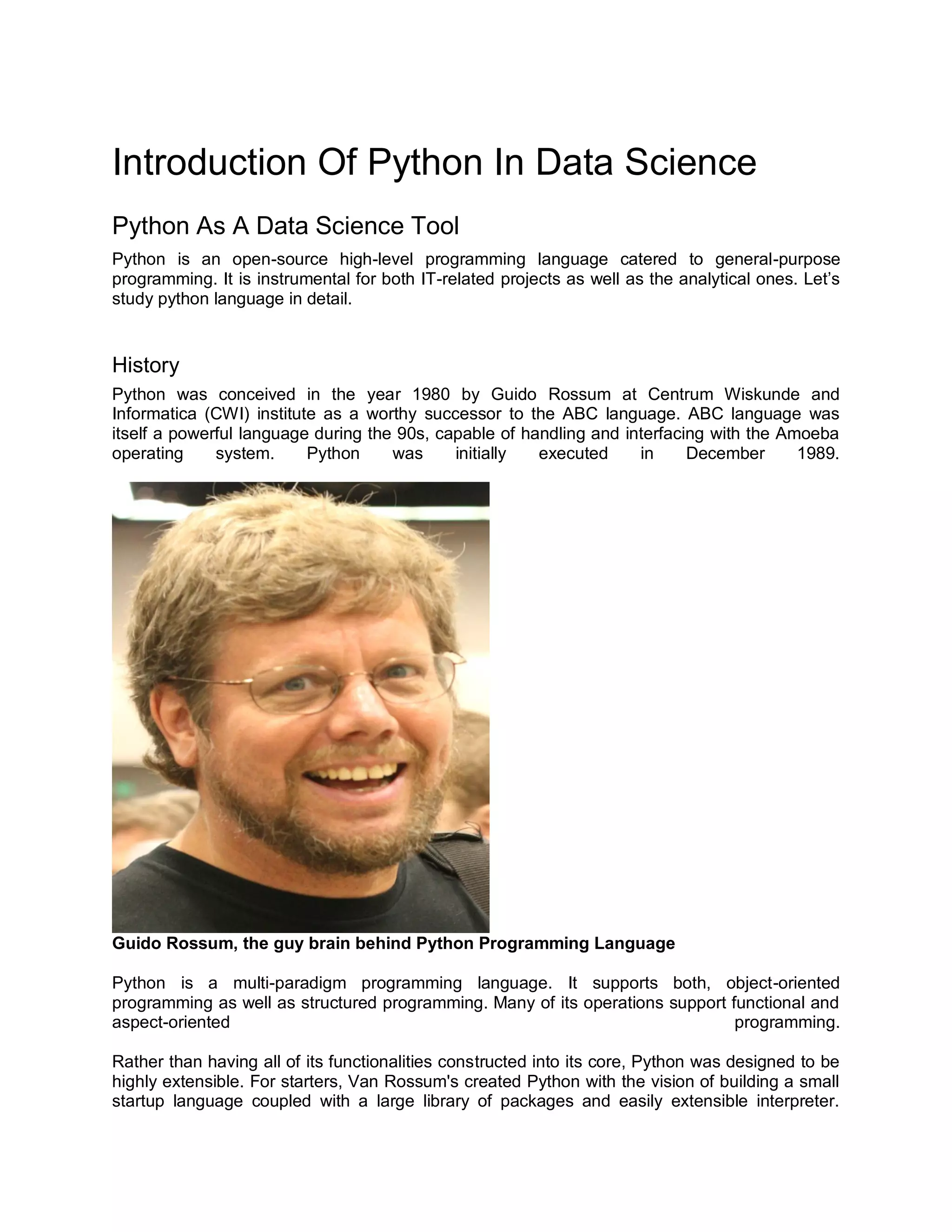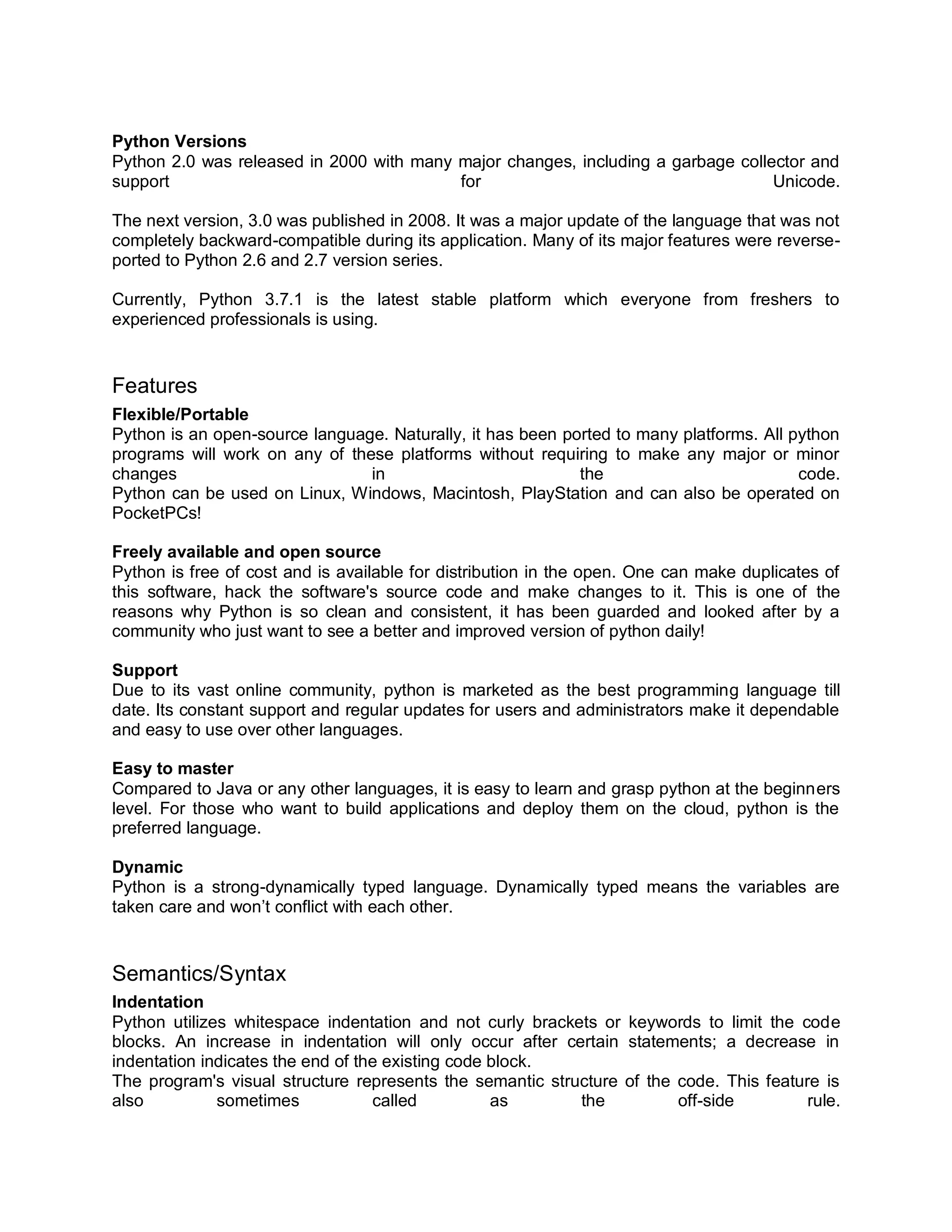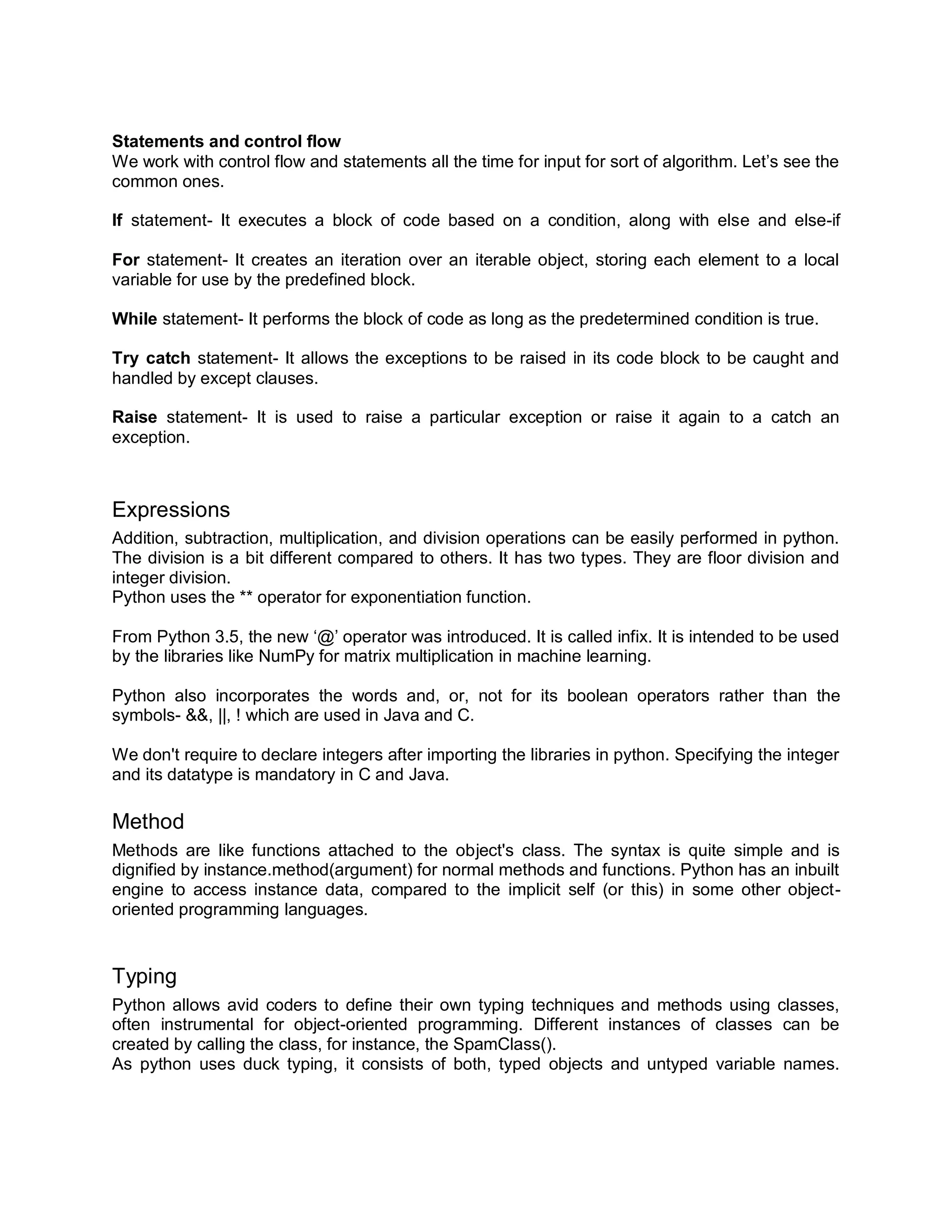Python is an open-source high-level programming language developed in the 1980s by Guido Rossum, designed to be flexible, portable, and easy to learn. It features dynamic typing, extensive libraries, and a unique syntax that uses whitespace for code blocks. Python has evolved through numerous versions, with Python 3.7.1 being the latest stable release, making it a preferred language for data science and application development.



